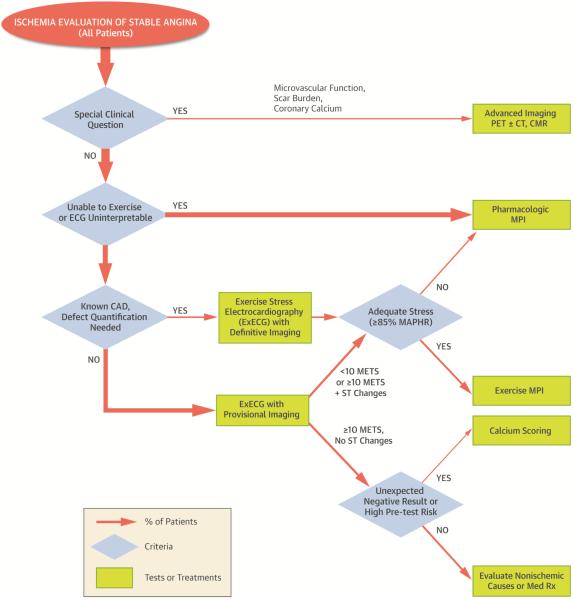Central Illustration. Stress test selection and performance algorithm.
Higher risk patients with unique clinical needs, such as assessment of microvascular function, can receive advanced ischemia imaging. In the remainder, those unable to exercise or with an uninterpretable ECG receive pharmacologic MPI. Patients able to exercise with known CAD in whom defect quantification is needed undergo exercise stress MPI. If they do not achieve 85% MAPHR, they receive pharmacologic MPI under a combined protocol. All others undergo ExECG with provisional imaging. If they achieve ≥10 METS and have no ST changes, they undergo evaluation for nonischemic chest pain or receive medical therapy. Unexpected negative results in patients with high pre-test risk can trigger calcium scoring for additional risk stratification. All others undergo exercise MPI or a combined protocol with pharmacologic stress if they are unable to achieve an adequate exercise heart rate (≥85% MAPHR). CAD=coronary artery disease; CMR=cardiac magnetic resonance; CT=computed tomography; ECG=electrocardiogram; ExECG=exercise stress electrocardiography; MAPHR=maximum age-predicted heart rate; METS=metabolic equivalents; MPI=myocardial perfusion imaging; PET=positron emission tomography; Rx=treatment.

